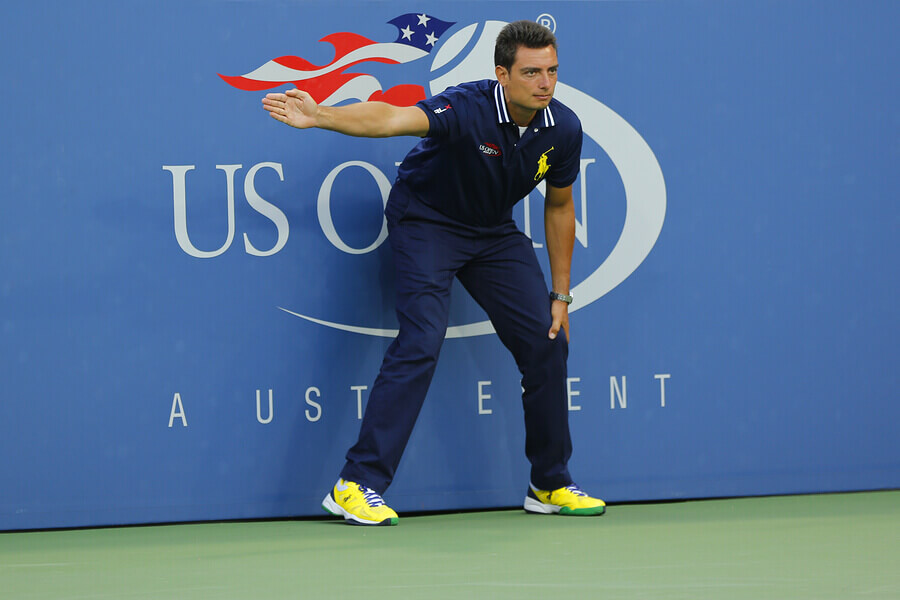The Rules of Tennis: Recent and Future Changes

Starting in 2018, the entities that regulate worldwide tennis have ordered some modifications to the regulations of this sport. Although questioned by some players and fans, the ultimate goal of these changes is to benefit the agile development of matches and reduce interruptions. Know which rules of tennis have changed and how they’ll continue to do so in the short term.
How did the rules of tennis change?
As with other sport changes, these new rules were agreed by all of the important organizations in charge of international tennis. This means that the International Tennis Federation – ITF, its acronym in English – the Association of Professional Tennis Players – ATP -, the Women’s Tennis Association – WTA – and the organizing bodies of Grand Slam tournaments all agreed.
Of course, tennis has been changing progressively during the last few years. For instance, federations have added some gradual technological innovations to tennis matches.
But why was the decision made to change the rules of such a popular sport? The main reason behind these changes is to adapt to the development of the matches according to the demands of fans.
One glaring example is the actual amount of game time. According to a study by the Wall Street Journal, in tennis matches, less than 18 percent of the total time is actually spent on the game with the ball going back and forth. That’s way too much downtime!
In other words, the new rules will increase the net percentage of the game and achieve more dynamic matches. In turn, this will avoid losing the attention of the fans in the court as well as the remote viewers.
Undoubtedly, marketing and business issues have increased input in the world of professional sports!
Modifications to the rules of tennis
In addition to the already known “hawk eye” system and the 25-second limitation between each service, there are certain changes that will revolutionize the world of professional tennis.
Some of these changes have already entered into force in 2018. Players and referees implemented the changes in events of young players such as the Next Gen Masters.
Here are some of the most important that will affect professional matches:
Goodbye to the line judges
Thanks to a system of cameras installed to control the courts, the referees who control the lines could disappear. Thus, similar to what happens with goals in soccer, it would be possible to produce a signal that warns when the ball bounces outside the limits of the court.

Shorter games, one of the rules of tennis designed for fans
The classic five sets of the Grand Slam and Davis Cup tournaments have been in discussion for a long time, but there are no changes in this aspect. Yes, you could change the number of games per set, which would go from six to four, with a tie break before a tie in three. In this case, players will have matches with five sets at best, without problems.
Likewise, the new rules of tennis also propose solutions such as games without deuce or advantage. This implies that with the score at 40 equals, whoever gets that last point would win the game.
For the same purpose, the warm-up time will shrink to five minutes before each game.
More dynamic matches
To interrupt the game as little as possible, matches will also omit the let rule. This traditional rule makes players repeat service when the ball touches the net.
If this regulation point is modified, the action would continue as long as the ball falls into the service area.
Fewer restrictions for fans
Beyond the silence to ensure the player’s concentration, in the future, spectators could move freely around the stadium. This is a very welcome change, since before they had to wait for a game interruption.
To make this happen, federations will use lighting. As seen in the Next Gen of Milan 2018, if the stands have fewer lights players won’t become as distracted. Of course, this would be impossible to apply during daytime competitions.

Contact with coaches and doctors: one of the most discussed tennis rules
While professional tennis players can talk with their coaches during matches, this isn’t always the case. However, the rule makers are evaluating whether or not they’ll lift this ban at certain times. Of course, this is still under discussion.
On the other hand, some experts have proposed to limit the number of medical care interventions on any given encounter to one.
This limitation is one of the most contended by players. Rafael Nadal himself has expressed himself against this new rule. In his opinion, this is detrimental to the player.
In short, the new rules have already been put on the table and, in several cases, also on the courts. While some are still under observation and development, other rules are already working. Do you agree with the new rules of tennis?
Starting in 2018, the entities that regulate worldwide tennis have ordered some modifications to the regulations of this sport. Although questioned by some players and fans, the ultimate goal of these changes is to benefit the agile development of matches and reduce interruptions. Know which rules of tennis have changed and how they’ll continue to do so in the short term.
How did the rules of tennis change?
As with other sport changes, these new rules were agreed by all of the important organizations in charge of international tennis. This means that the International Tennis Federation – ITF, its acronym in English – the Association of Professional Tennis Players – ATP -, the Women’s Tennis Association – WTA – and the organizing bodies of Grand Slam tournaments all agreed.
Of course, tennis has been changing progressively during the last few years. For instance, federations have added some gradual technological innovations to tennis matches.
But why was the decision made to change the rules of such a popular sport? The main reason behind these changes is to adapt to the development of the matches according to the demands of fans.
One glaring example is the actual amount of game time. According to a study by the Wall Street Journal, in tennis matches, less than 18 percent of the total time is actually spent on the game with the ball going back and forth. That’s way too much downtime!
In other words, the new rules will increase the net percentage of the game and achieve more dynamic matches. In turn, this will avoid losing the attention of the fans in the court as well as the remote viewers.
Undoubtedly, marketing and business issues have increased input in the world of professional sports!
Modifications to the rules of tennis
In addition to the already known “hawk eye” system and the 25-second limitation between each service, there are certain changes that will revolutionize the world of professional tennis.
Some of these changes have already entered into force in 2018. Players and referees implemented the changes in events of young players such as the Next Gen Masters.
Here are some of the most important that will affect professional matches:
Goodbye to the line judges
Thanks to a system of cameras installed to control the courts, the referees who control the lines could disappear. Thus, similar to what happens with goals in soccer, it would be possible to produce a signal that warns when the ball bounces outside the limits of the court.

Shorter games, one of the rules of tennis designed for fans
The classic five sets of the Grand Slam and Davis Cup tournaments have been in discussion for a long time, but there are no changes in this aspect. Yes, you could change the number of games per set, which would go from six to four, with a tie break before a tie in three. In this case, players will have matches with five sets at best, without problems.
Likewise, the new rules of tennis also propose solutions such as games without deuce or advantage. This implies that with the score at 40 equals, whoever gets that last point would win the game.
For the same purpose, the warm-up time will shrink to five minutes before each game.
More dynamic matches
To interrupt the game as little as possible, matches will also omit the let rule. This traditional rule makes players repeat service when the ball touches the net.
If this regulation point is modified, the action would continue as long as the ball falls into the service area.
Fewer restrictions for fans
Beyond the silence to ensure the player’s concentration, in the future, spectators could move freely around the stadium. This is a very welcome change, since before they had to wait for a game interruption.
To make this happen, federations will use lighting. As seen in the Next Gen of Milan 2018, if the stands have fewer lights players won’t become as distracted. Of course, this would be impossible to apply during daytime competitions.

Contact with coaches and doctors: one of the most discussed tennis rules
While professional tennis players can talk with their coaches during matches, this isn’t always the case. However, the rule makers are evaluating whether or not they’ll lift this ban at certain times. Of course, this is still under discussion.
On the other hand, some experts have proposed to limit the number of medical care interventions on any given encounter to one.
This limitation is one of the most contended by players. Rafael Nadal himself has expressed himself against this new rule. In his opinion, this is detrimental to the player.
In short, the new rules have already been put on the table and, in several cases, also on the courts. While some are still under observation and development, other rules are already working. Do you agree with the new rules of tennis?
All cited sources were thoroughly reviewed by our team to ensure their quality, reliability, currency, and validity. The bibliography of this article was considered reliable and of academic or scientific accuracy.
- El nuevo tenis: cuáles son los principales cambios en las reglas de juego que plantea la ATP. 17 de mayo de 2017. La Nación. https://www.lanacion.com.ar/deportes/tenis/cuales-son-los-cambios-reglamentarios-para-el-tenis-y-cuando-se-pondran-a-prueba-nid2024535
- El tenis enfrenta un nuevo reto: cambio de reglas. 13 de mayo de 2018. El Universal. https://www.eluniversal.com.mx/columna/luis-tigre-baraldi/universal-deportes/mas-deportes/el-tenis-enfrenta-un-nuevo-reto-cambio-de
- Rodríguez, R. 23 de noviembre de 2017. Así serán las nuevas normas del tenis para 2018 (y alguna no va a gustar a Rafa Nadal). El Confidencial. https://www.elconfidencial.com/deportes/tenis/2017-11-23/nuevas-normas-tenis-2018-tiempo-saque-cronometro_1482361/
This text is provided for informational purposes only and does not replace consultation with a professional. If in doubt, consult your specialist.








